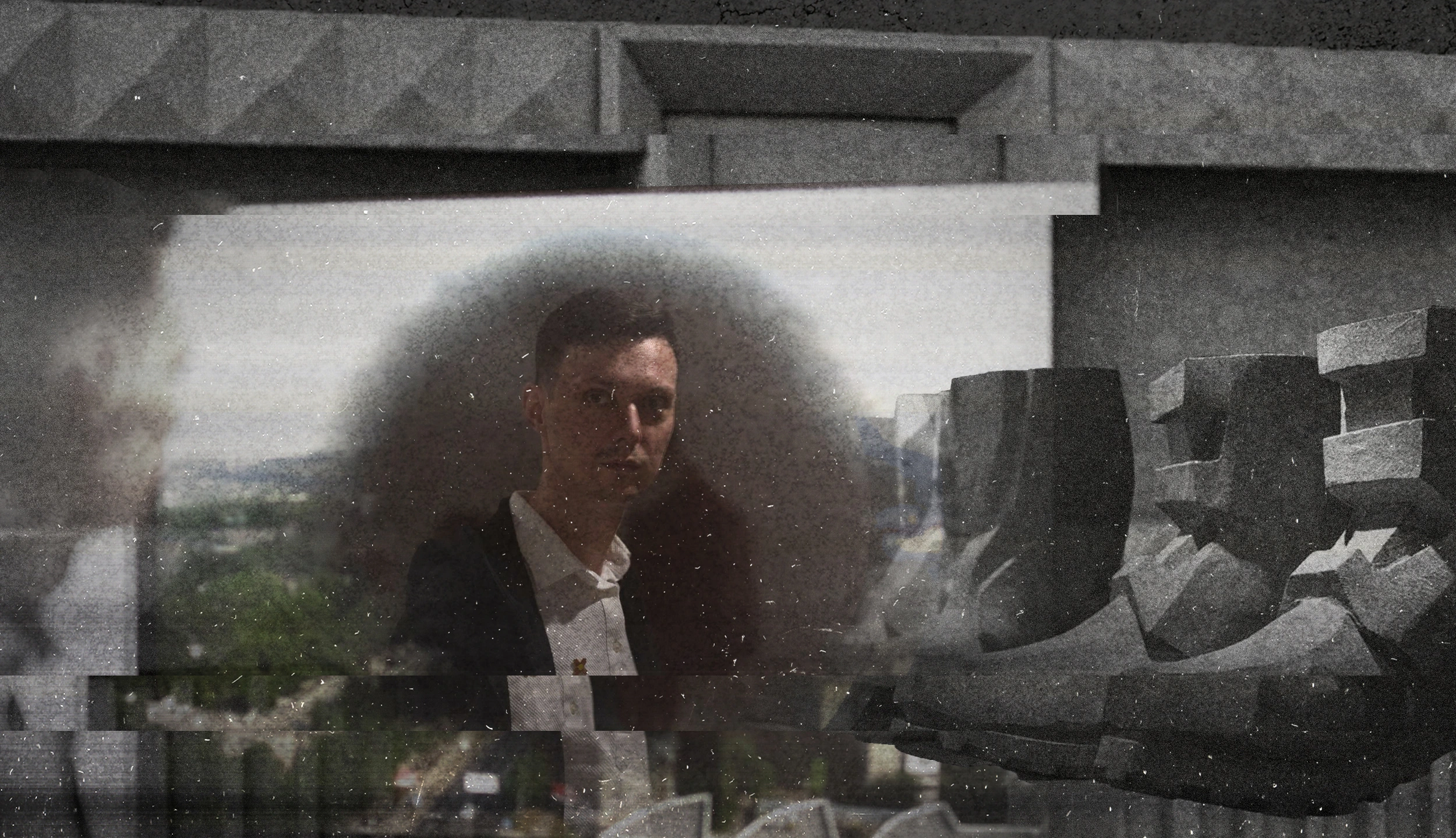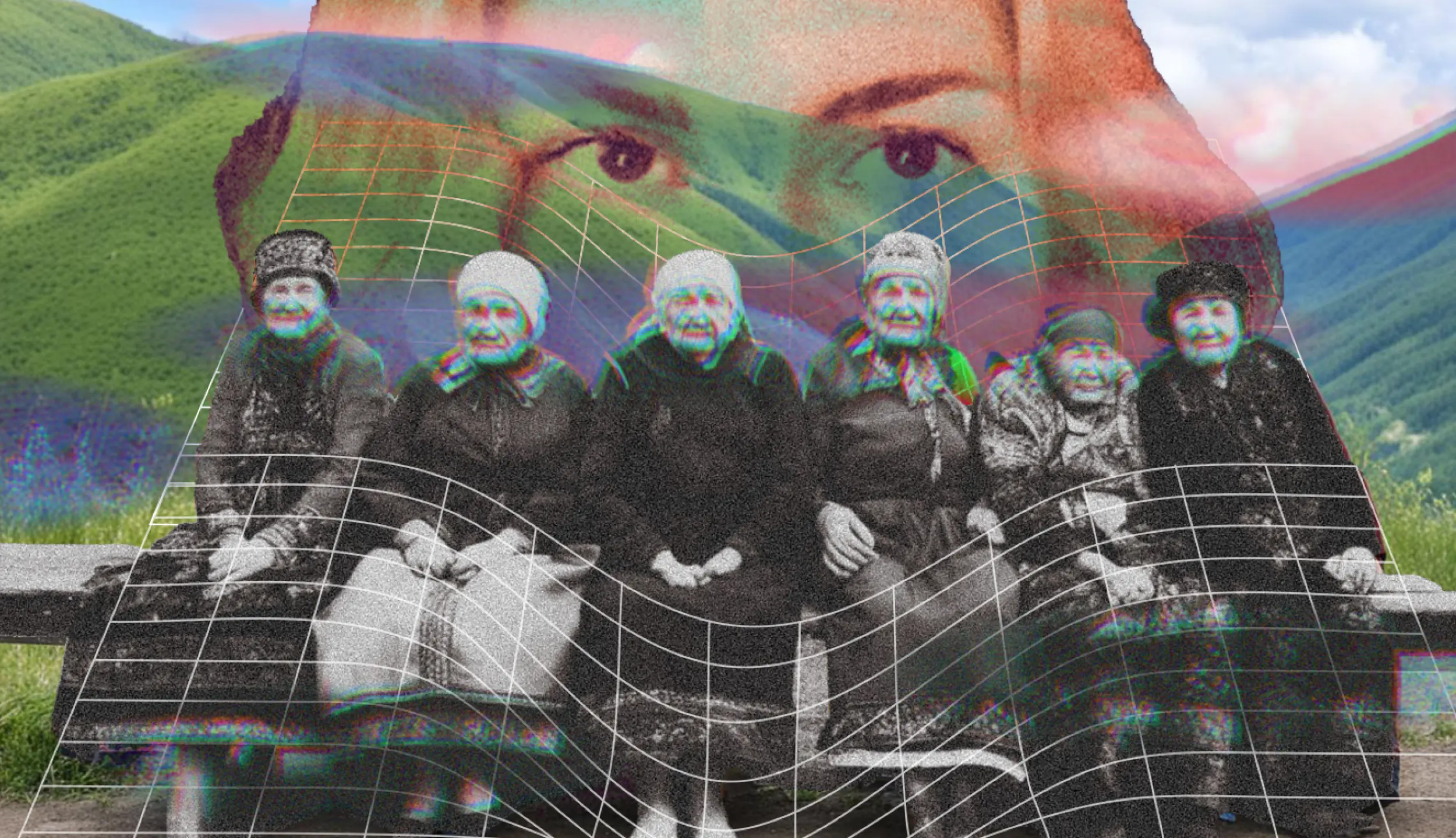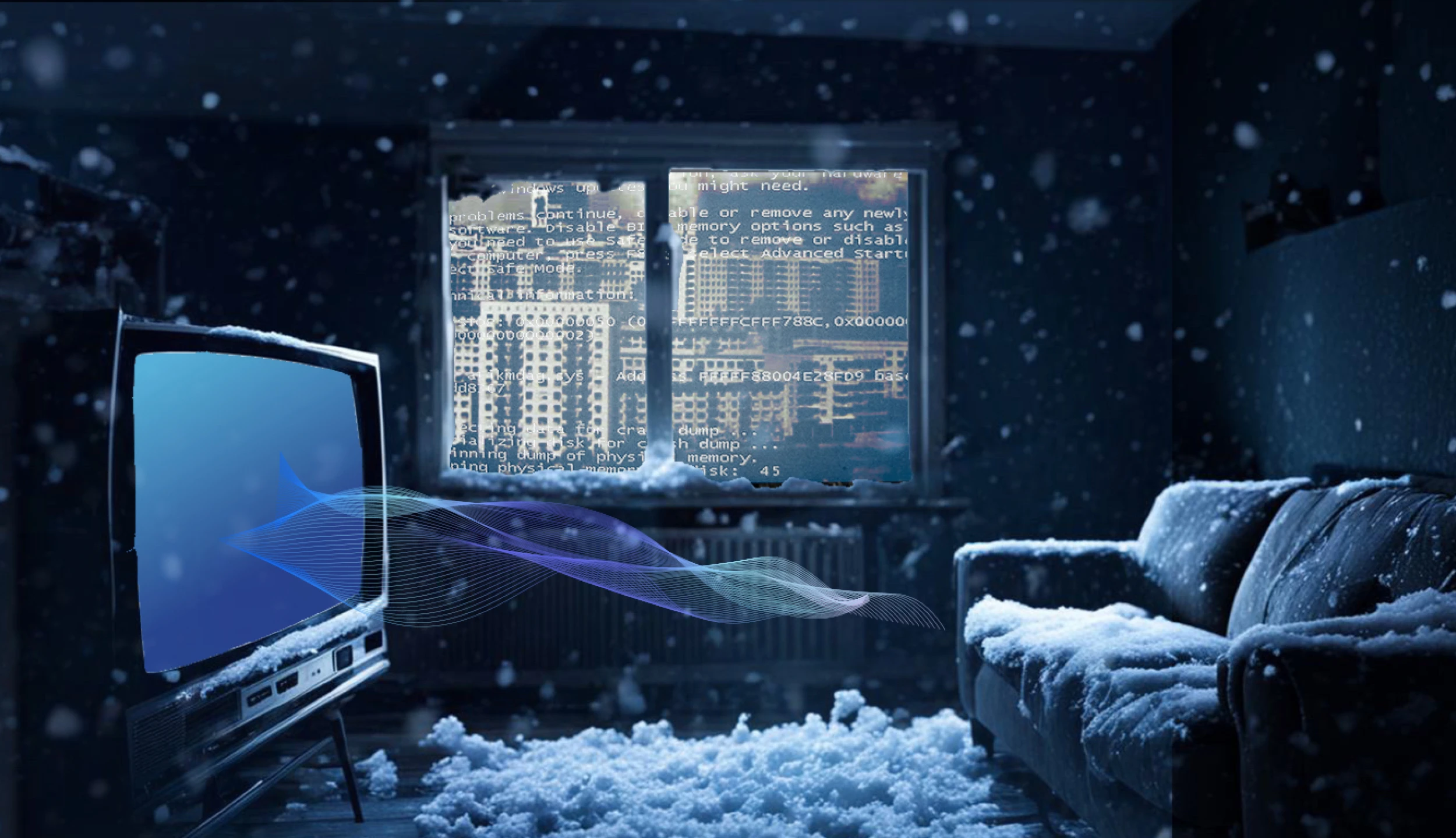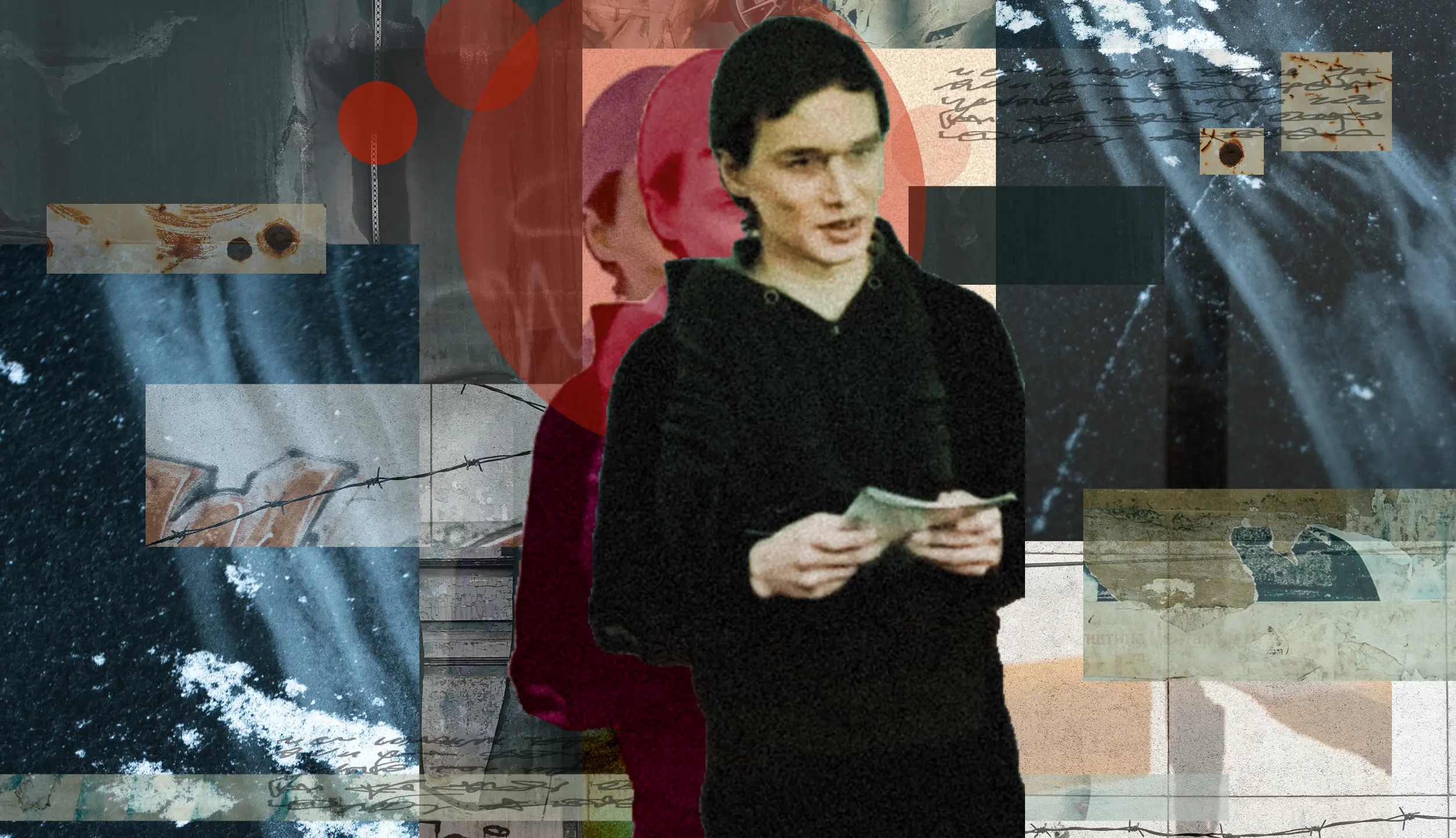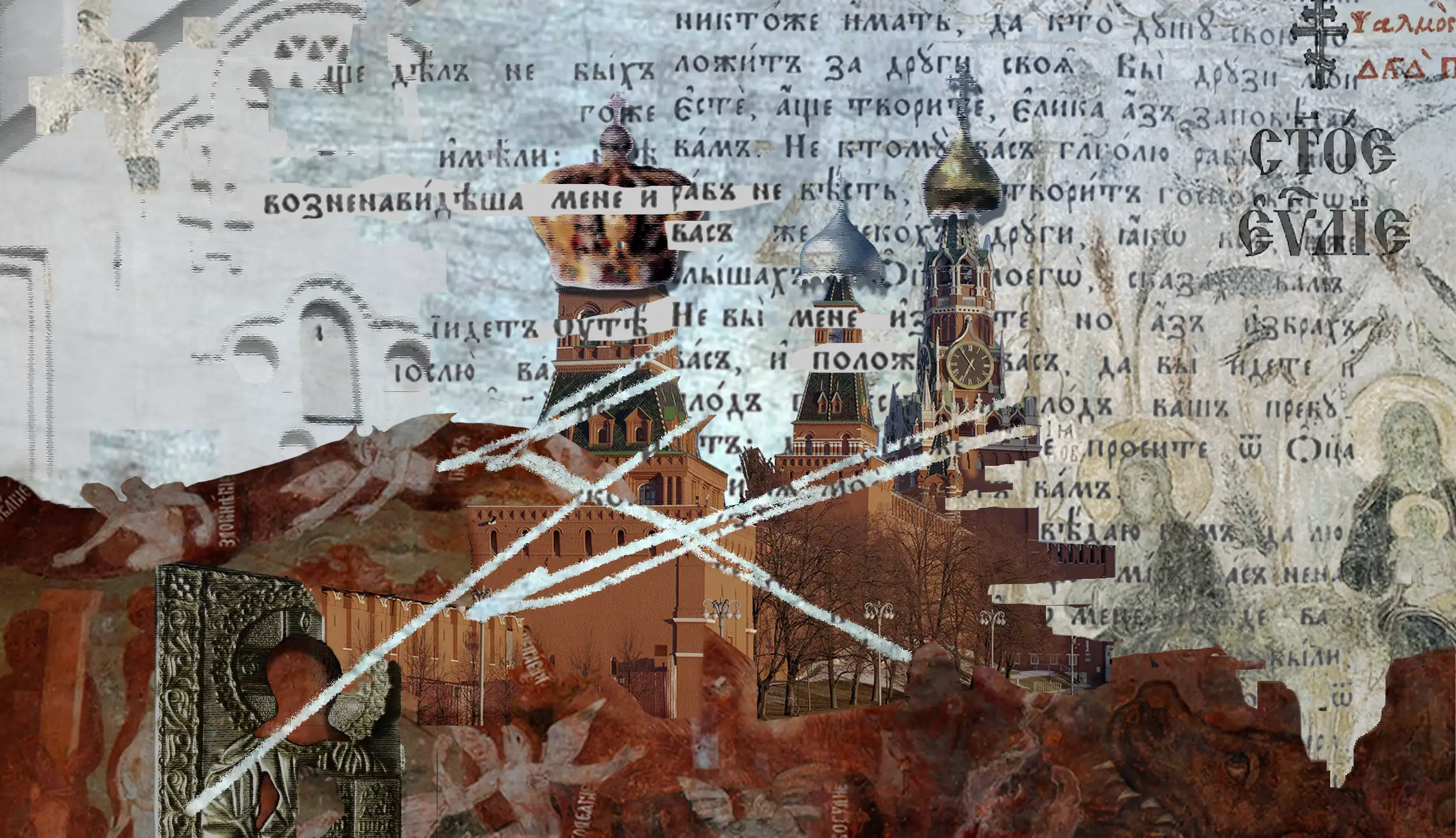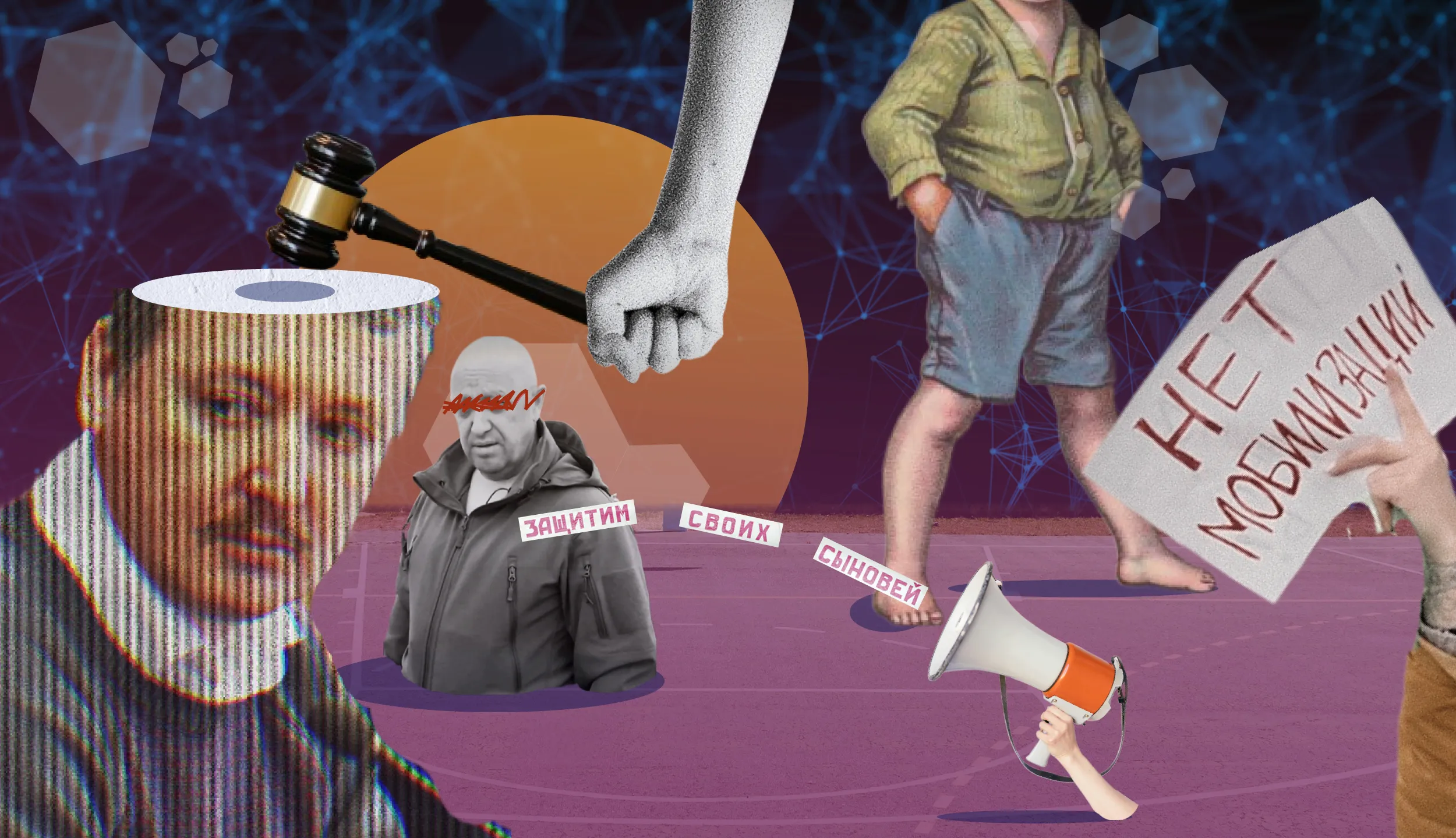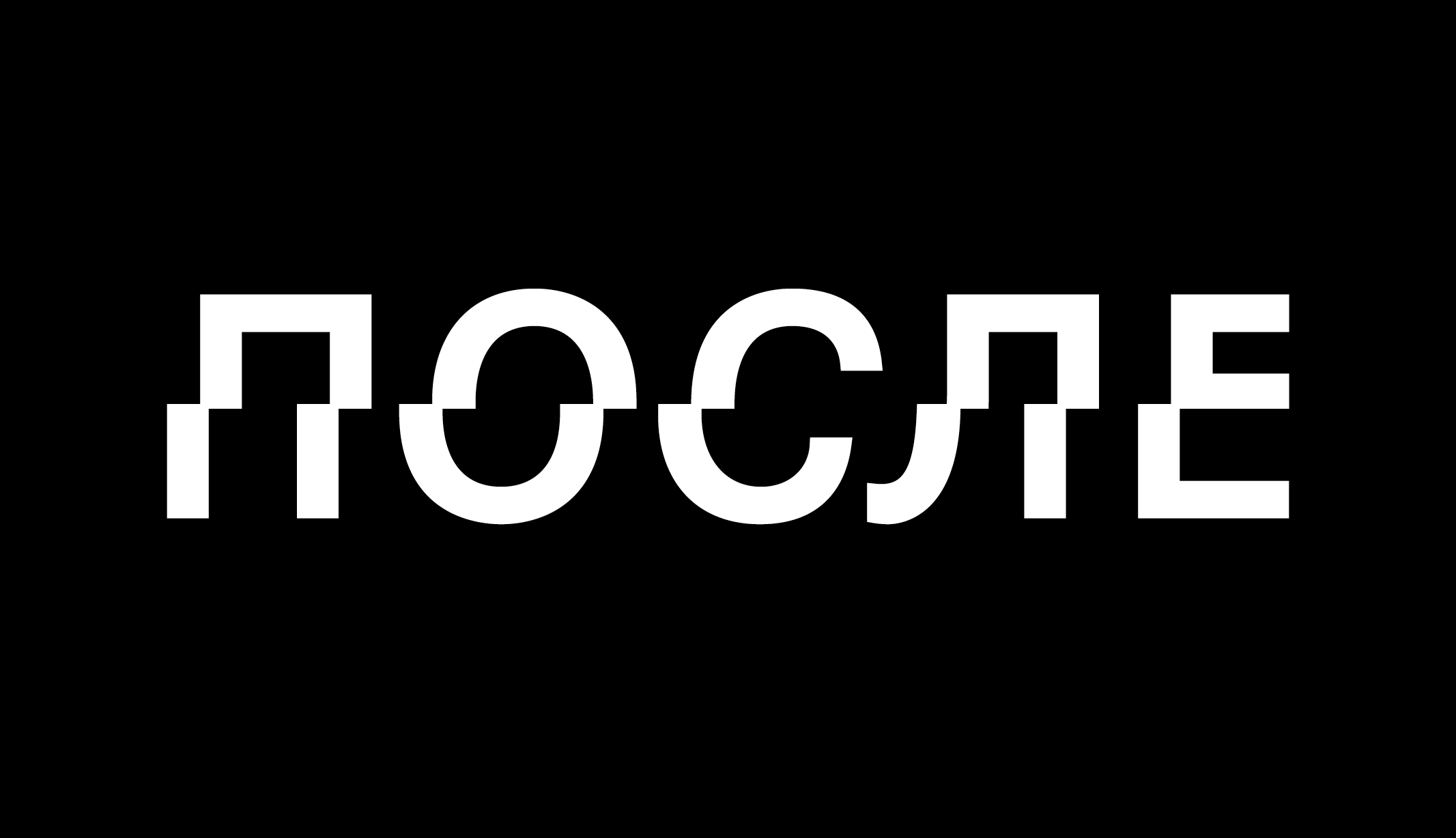— How did you personally react to the beginning of the war and the events that followed?
— When the full-scale invasion began, I was in Kyiv, and frankly, up to the last moment I refused to believe that it was real. Before the invasion, my social circle was divided in two: those who rejected the possibility of invasion, including myself and probably the Ukrainian government, and those whom we considered alarmists at the time, but who were right in the end. Those people believed that the massive information war that had begun in the media several months before the invasion would inevitably lead to a military escalation.
Because of my denial, I was caught completely off guard. I had not prepared to evacuate, as many others had, but I quickly packed up and moved to Lviv, like many other Kyivans. For people from my hometown of Kharkiv it was much more difficult. It took about two days before it become difficult to leave Kyiv. But in Kharkiv, because it is so close to the Russian border, it took just a few hours for evacuations to shut down. Many people were trapped in basements and bomb shelters because of constant shelling, and it became nearly impossible to escape.
It never even crossed my mind to continue my professional activities in the sense of producing new artworks. It was impossible, because all thoughts were on other, more pressing, things: how to escape, how to help friends and family move. Later, a flurry of volunteer activities began. There was a large influx of migrants to Lviv. We helped them with food and housing, and we helped women and children relocate to Europe. The volunteer activist group known as Kitchen cooked food and brought it to the train station every day. Some of my comrades joined the Territorial Defense Forces, but I didn’t. I’m someone who has never held a weapon in my life, and I had no military training, so it would have been just too radical a change. I have been working in contemporary art for about 15 years and I found ways to talk about the war with an international audience. Through cultural events I was able to collect donations and send them to the Ukrainian army and volunteer organizations. I participated in public events remotely, on Zoom, since most Ukrainian men can’t leave the country. After several months in Lviv, after Bucha and Irpin were liberated, I returned to Kyiv, like many others.
— In your video work Shelter, which you created ten years ago, you show an elderly teacher in the Kharkiv region who gives a class on the basic skills of civil defense and handling weapons. You filmed it when the military actions in Ukraine, in Kharkiv in particular, seemed impossible, and this teacher looked like a complete anachronism. How do you understand this work now? Was this a subconscious prophecy, or proof of the underestimated power of anachronism?
— This applies not only to this work, but to much that I did between 2014 and 2022 and earlier. Today, I see all this as a commentary on current events. These works were created to reflect on the past, on the Cold War, when bomb shelters were relics that seemed out of place. The paradox of the schoolteacher in this video is that he, a man of Soviet upbringing, talks about protecting his country, apparently still implying that America was the enemy. However, after 2014, the situation changed. And all of these spaces that had been preseved, and which until recently seemed like set pieces for a fantasy film, suddenly became part of our reality. They were opened and re-equipped to protect the locals from Russia. Before this year’s military and financial assistance from the European Union and the US, Ukraine could defend itself largely thanks to the remnants of Soviet infrastructure and weapons. In the USSR, Ukraine was one of the most developed republics and not everything in recent decades was sold or looted. Your question is interesting, because today one can’t be sure that the past is in the past. Like bomb shelters, the past is a preserved substance, but preserves can be opened at any time to be used. Besides the film with the schoolteacher, that project included a video about a cellar with emergency supplies and food preserves under my grandparents and parents’ house. They started to use the cellar I showed in the film for its protective purpose during the ongoing war. In the first days of the current invasion, they hid there from the bombing, and when the opportunity arose, they left for western Ukraine.
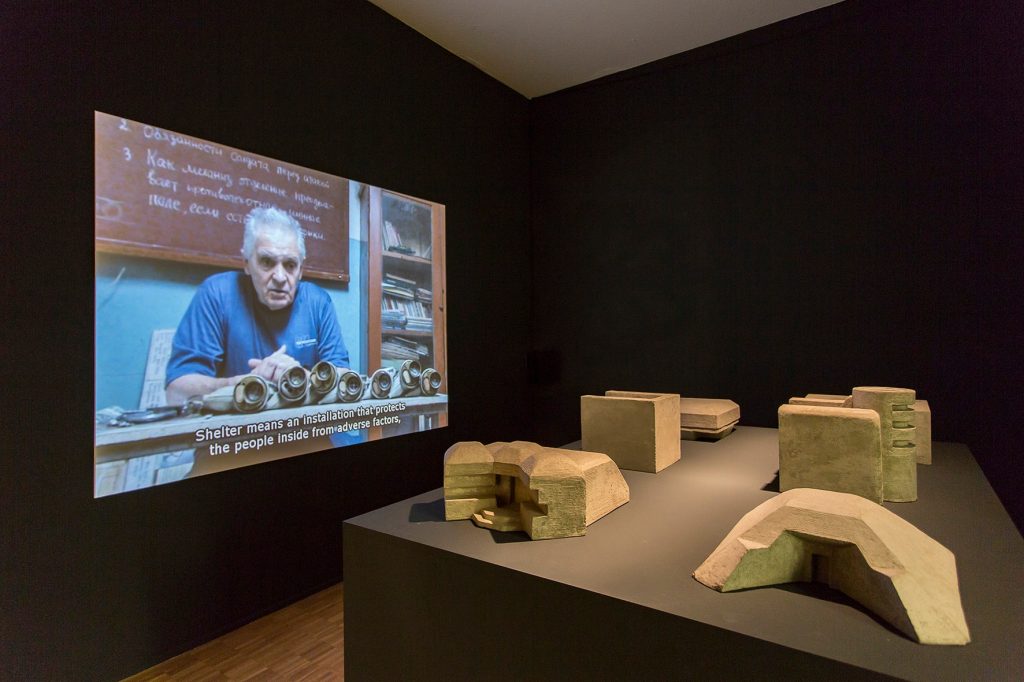
I managed to go to Kharkiv only once, in May of this year. At the time, very few of my acquaintances remained there, and the city had been essentially destroyed. In some neighborhoods, there isn’t a single house that hasn’t been hit by shelling. Another previous work of mine that I decided to continue in the present is a film titled Regular Places. It captures the streets and squares where violent confrontations between activists of the local Maidan and Anti-Maidan groups took place. The brutality of that civil conflict is nothing compared to the brutality of the Russian invasion. There is a sad joke in Kharkiv: “After the first Russian missiles, the most die-hard Putinists fell in love with Ukraine.“ It turns out that many of the places I filmed in 2014-2015 are completely disfigured today, and I decided to make a new chapter that shows this new landscape.
For today’s Russian leadership, and Putin in particular, mythology is very important. It is difficult to explain otherwise why the Kremlin thought that Ukrainians would be happy with such “liberation“. Myths seem to be displacing and supplanting reality today. Some people live in this fictional world, while others experience the reality of the bombing and shelling. The lives of Ukrainians are the price of Putin’s mythologization. Shelter was dedicated to the Cold War, but we are witnessing a new Cold War now. I completely disagree with those who see this situation as a geopolitical confrontation between two empires, Russia and the United States. This is exactly the vision that Russia wants us to believe: the idea that the West provoked the war, that this is a NATO proxy-war and so on. I suggest looking at what is happening from the Ukrainian perspective, because we are fighting to survive as a state, that, according to Putin, it has no right to exist. Nontheless, there are broader political processes at play. Some countries are stronger, some are weaker, and all this plays a role in this situation. Ukraine cannot survive only on the fighting spirit of its citizens alone. We need allies.
— Indeed, the Kremlin has unleashed this war seemingly as an attempt to resurrect the past and to recreate the mythical “historical Russia”. They are waging an aggressive imperialist war in the spirit of the 20th century. By contrast, Ukraine is fighting for its future. Can we say that the war is between one side oriented toward the future and another that wants a return to the past? How much do you agree with this popular sentiment?
— This question needs to be unpacked. On the one hand, the gradual movement of Ukraine into the future was suspended by the full-scale invasion. The war has been on since 2014 but, almost paradoxically, Ukraine managed to build a lot of strong institutions in that time. I witnessed that the state had started supporting art and culture and stopped outsourcing it to the private sector. The Ukrainian Cultural Foundation and the Ukrainian Institute appeared, the State Cinema Agency finally started working, the literary scene was vibrant. Self-organized initiatives were also active during this time. My friends and I in the DE NE DE (meaning “Somewhere”) movement actively participated in research expeditions to eastern Ukraine and did exhibitions and film screenings there. I mean the Donetsk and Luhansk regions, as those places were not occupied to the same degree as post-February 2022, and we could work with local museums. These museums had been ignored and neglected for many years, and they were eager to participate in experimental projects. A few years ago, we created a show titled Saber, Deer and Spinning Wheel in the Local History Museum of Stanytsia Luhanska and showed pieces from their collection that had not been exhibited before. For example, there was a bust of Lenin with his head pierced by a Russian GRAD rocket launcher. Today the village is occupied, and they’re planning to devote the museum to the Don Cossacks. The war has set everything back, because during war it’s hard to talk about economic and cultural development. Everyone is just struggling to survive. When all the resources are directed at a military victory, it affects civil and labor rights. A testimony to this is modern Israel, where democracy is subordinated to the idea of defense and a strong army, and human rights remain in the background. Therefore, this question of confrontation between the past and the future is contradictory. Ukraine has been strongly pushed away from the future.
However, at the level of rhetoric, this confrontation really is happening. This is clearly a generational conflict. If you look at Zelensky and his entourage, and Putin and his entourage, the difference is obvious, and it clearly irritates the latter. Zelensky’s government differs from previous Ukrainian politicians in that he is not afraid to speak directly to Europeans, for example, openly criticizing Germany’s corrupt ties to Russia. However, erasing one’s past is also problematic. I am afraid that Ukraine may be subject to amnesia and might try to build a future from scratch. For example, the Soviet experience might be dismissed as alien, as a history into which Ukraine was dragged by force. This is understandable, because our situation today is far from calm and normal, and we are dealing with a damaged and affect-charged society. On the other hand, although it is believed that wars inevitably lead to an increase in conservative sentiments, I try to stay optimistic. This war is engaging an unprecedented number of people with very different political views and backgrounds. Organizations such as Solidarity Collectives and the Unicorn Battalion support many left-wing activists and LGBT people who are serving in the army. Right-wing groups played a big role in 2014, because the Ukrainian professional army was weakened and undeveloped, but today the situation is different.
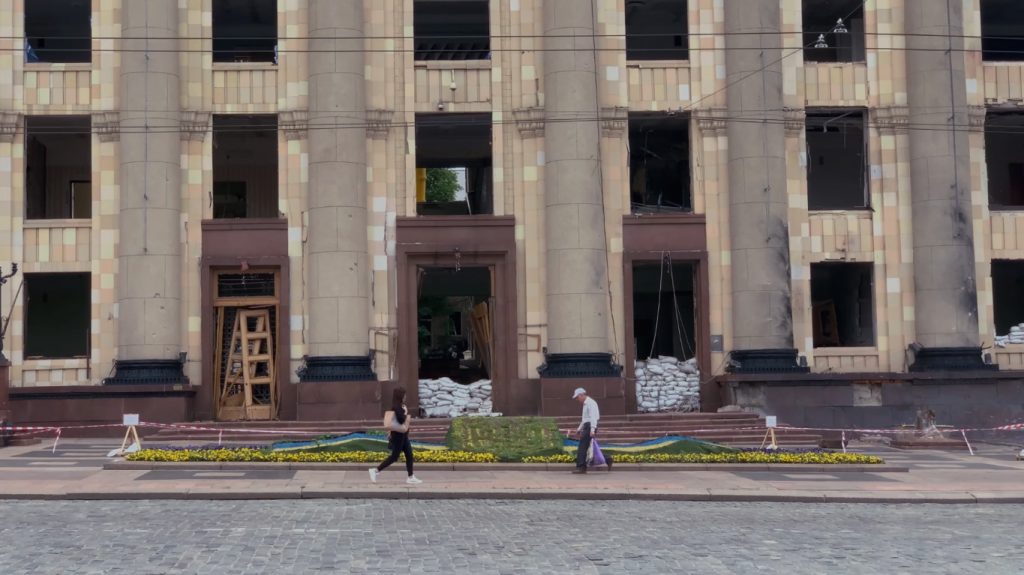
In 2022, the war became a people’s war for Ukraine: some went to the front, others participate in volunteer movements, and others fundraise. I hope that when the war ends and the time comes for the inevitable ideological struggle for the future, there will be even more participant voices. I believe we’ll see this play out as a competition because everyone participated in the war to one degree or another.
— So, will everyone have the right to vote and offer their opinions?
— The conservative right-wing movement, perhaps, in its traditional manner, will try to drown out other voices, but it will be difficult, because there will be many ways of envisioning the future.
— February 24 has drawn a firm boundary, ending that stage of post-Soviet history when the countries of the former Soviet bloc saw themselves as a part of a common cultural space with a huge number of transnational ties. We are now entering a new situation of coexistence that is at once intertwined and completely distinct. What will all this mean for culture? The post-Soviet era is ending for Ukraine. In recent decades, Ukrainian artists have mainly contemplated our Soviet heritage and its ambiguous and complicated position in modern Ukraine. Obviously, this is also changing. What do you think about these changes?
— This period that we have been calling post-Soviet is definitely over. This is due to the failure of the CIS project. If Russia had not been an authoritarian country (which has gradually turned into a fascist one), but had been a democracy, such a project could have successfully existed for a long time. Today, because of the war, Ukraine is getting much closer to Poland and the Baltic states. This schism has been developing in other parts of the region too, not just with Ukraine but also in Georgia, Armenia, and Moldova. It was inevitable. Perhaps we will witness new schisms within Russia itself related to their internal regional conflicts. These conflicts have been suppressed and forgotten, but they could spill out again. The Russian Federation has never functioned as a federation, because it deprives individual regions of their rights and oppresses entire peoples. The existence of the Russian Federation in today’s political and geographical reality artificially and repressively blocks any historical development. What we will witness in the future is not a not new commonality, but a new division that will emerge out of this liberation from empire.
It is difficult to talk about artistic reflection here. I mentioned amnesia in a society that is affected by aggression. Ukrainian artists, myself included, have been working with historical memory for a long time. Our approach has been to complicate the official narrative of erasure of the Soviet past as unambiguously totalitarian and imperial and the glorification of the national struggle for independence. Although the USSR positioned itself as an anti-imperial project, it quickly turned into an empire. As for the Ukrainian state, the ideas that existed from 1917 to 1923 are questionable too. We talk a lot about the Ukrainian People’s Republic and the Central Rada, that is, about social democracy, but do we also remember Makhno with his anarchist project, or the group of Borotbists who advocated for the independence of Ukraine from radical left-wing positions? Or do we only use the ideas of the Organization of Ukrainian Nationalists? What I mean is that it is important to consider the complexity and competitiveness of ideas, and not to subordinate everything to one single truth. The latter usually leads to authoritarianism. However, if we talk about Ukraine’s potential in terms of civil liberties, any comparison with today’s Russia is impossible.
In Ukraine, the role of culture and art has changed a lot since the beginning of the war. The concepts of center and periphery have shifted and lost their meaning. When Kyiv was under threat of capture, all activities moved to western Ukraine. The western part of the country became a transit zone. Lviv, in a certain sense, began to be perceived as Kyiv had, in that it hosted people from all parts of the country, e.g. from Kharkiv, Mariupol, and Dnipro. Of course, people did not move there of their own free will. But cultural events have seemed essential; people gather in shared spaces for things like film screenings and discussions. Art has taken on a therapeutic role. Various institutions have launched mini-residences and shelters for artists, for example, providing short-term studio space in the Carpathians.
This is different from the international cultural scene because communication with the public abroad is very different. In Europe, cultural events have become part of the cultural resistance to the war. Apparently, this understanding prompted the Ministry of Culture of Ukraine to issue temporary exit visas for cultural workers to attend international events. In Europe, we encounter misunderstandings of the context and confusion about the details. At first, people often viewed the warring parties in the conflict as equals, although it was obvious who was the aggressor and who was the victim. It’s easy to be a pacifist and oppose the supply of weapons to the Ukrainian army when you are at a safe distance and you’re worried about rising energy costs instead of about Russian missiles that can hit your house or destroy a power plant. Plus, the position of the European left has long been reduced to critiques of the United States as the world’s biggest empire and political hegemon. Of course, it is difficult for many to change views and see that Russia, with its mix of feudal monarchy and fascist dictatorship with a nuclear arsenal, poses a much greater danger. Having carefully studied the aggressive military actions of the United States in different countries, the Russian leadership uses them as a model, trying to reproduce them but not on the premise of fighting for justice, but on the premise that “if they do it, why can’t we.“

